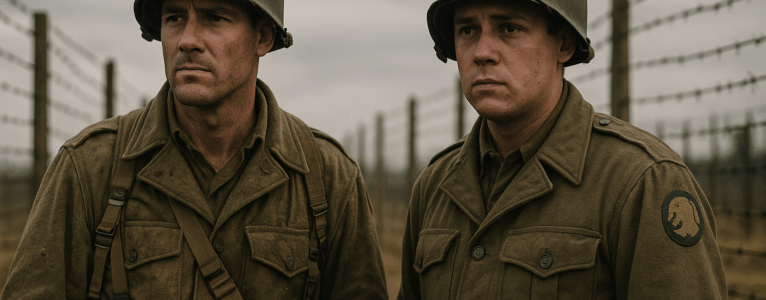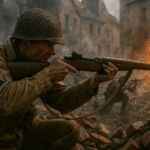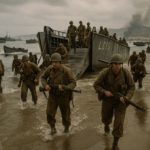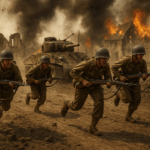The 106th Infantry Division, nicknamed the “Golden Lions” was one of the last U.S. divisions formed during World War II. Its brief but harrowing combat history is defined by one of the most brutal engagements of the European theater: the Battle of the Bulge. For many of its soldiers, the Ardennes was their first, and last combat experience.
Formation and Training (1943–1944)
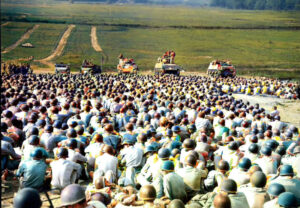
Constituted on May 27, 1942, the 106th Infantry Division officially activated on March 15, 1943, at Fort Jackson, South Carolina. Commanded initially by Major General Alan W. Jones, the division was made up largely of fresh draftees and college ASTP (Army Specialized Training Program) transfers, a mix of youth and intelligence, but little combat experience.
Throughout 1943 and 1944, the division trained in South Carolina, Tennessee (for maneuvers), and later at Camp Atterbury, Indiana, and Camp Myles Standish, Massachusetts, for final staging. By October 1944, the division was bound for Europe.
Deployment to the Ardennes

The 106th arrived in Le Havre, France, in late November 1944. From there, they moved by rail and truck into Belgium, relieving elements of the 2nd Infantry Division in the Schnee Eifel sector by December 11, 1944, just days before the German offensive.
The division’s area of responsibility, near the Belgian-German border, was a quiet sector on paper. But its location was dangerously overextended, lightly fortified, and faced the bulk of the German 5th Panzer Army’s planned breakthrough.
The Battle of the Bulge Begins: December 16, 1944
In the early hours of December 16, the German Wehrmacht launched Operation Wacht am Rhein, the Battle of the Bulge. The 106th was one of the first American units hit.
Two of its regiments, the 422nd and 423rd Infantry Regiments, were soon surrounded in the Schnee Eifel. With communications severed and reinforcements blocked by enemy armor, these units fought on until December 19, when starvation, ammunition shortages, and encirclement forced over 6,000 men to surrender, the largest U.S. mass surrender in Europe.
This catastrophic loss shocked the Army and the public. But it’s important to recognize the courage and sacrifice of the soldiers who fought on against impossible odds.
The Stand at St. Vith
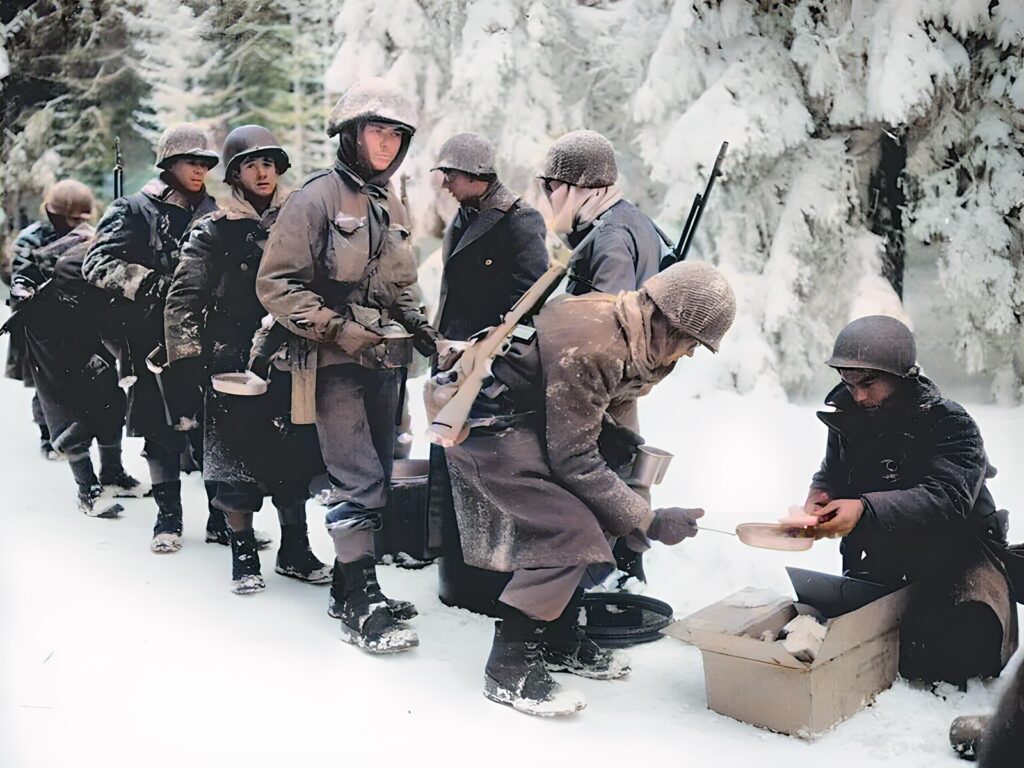
While two regiments were surrounded, the 424th Infantry Regiment, supported by elements of the 7th Armored Division, held its ground at the strategic crossroads town of St. Vith.
From December 17 to 23, this stubborn defense slowed the German advance significantly. General Bruce C. Clarke, commanding the 7th Armored, coordinated with what was left of the 106th and other scattered units to form a blocking force.
Though St. Vith was eventually abandoned under heavy pressure, the delay it imposed on the Germans disrupted their timetable, buying precious time for U.S. reinforcements to arrive elsewhere along the front.
Aftermath and Rebuilding
The losses suffered by the 106th were severe. Two-thirds of its infantry strength had been wiped out in the Schnee Eifel. Survivors were either reassigned or brought back behind the lines to regroup. Major General Alan W. Jones, devastated by the division’s fate and suffering a heart attack, was relieved of command. He was succeeded by Brigadier General Herbert T. Perrin, who had previously served as assistant division commander.
After the devastating losses during the Battle of the Bulge, including the surrender of the 422nd and 423rd Regiments and heavy fighting at St. Vith, the 106th Infantry Division was pulled from front-line combat and assigned to rear-area duties while it was reconstituted with fresh replacements. During this period, the division took on critical support roles such as guarding German prisoners of war (POWs), securing supply routes, and managing logistical operations in France and Belgium. Though temporarily sidelined from combat, these duties were essential to the broader Allied war effort. By April 1945, the rebuilt division returned to Germany to participate in limited combat operations and occupation duties as the war drew to a close.
The War’s End and Legacy
The 106th Infantry Division’s final combat operations occurred in southern Germany, as they helped mop up remaining German forces. The war in Europe ended on May 8, 1945, Victory in Europe Day. The division was assigned occupation duties for several months before returning home and being inactivated on October 2, 1945.
Though often remembered for the disaster at the Schnee Eifel, the 106th’s true legacy is one of endurance. The division’s men, many just teenagers, were thrust into the heart of a massive German offensive and held their ground as best they could. Their sacrifices helped blunt the spearhead of Hitler’s final gamble.
Remembering the Golden Lion
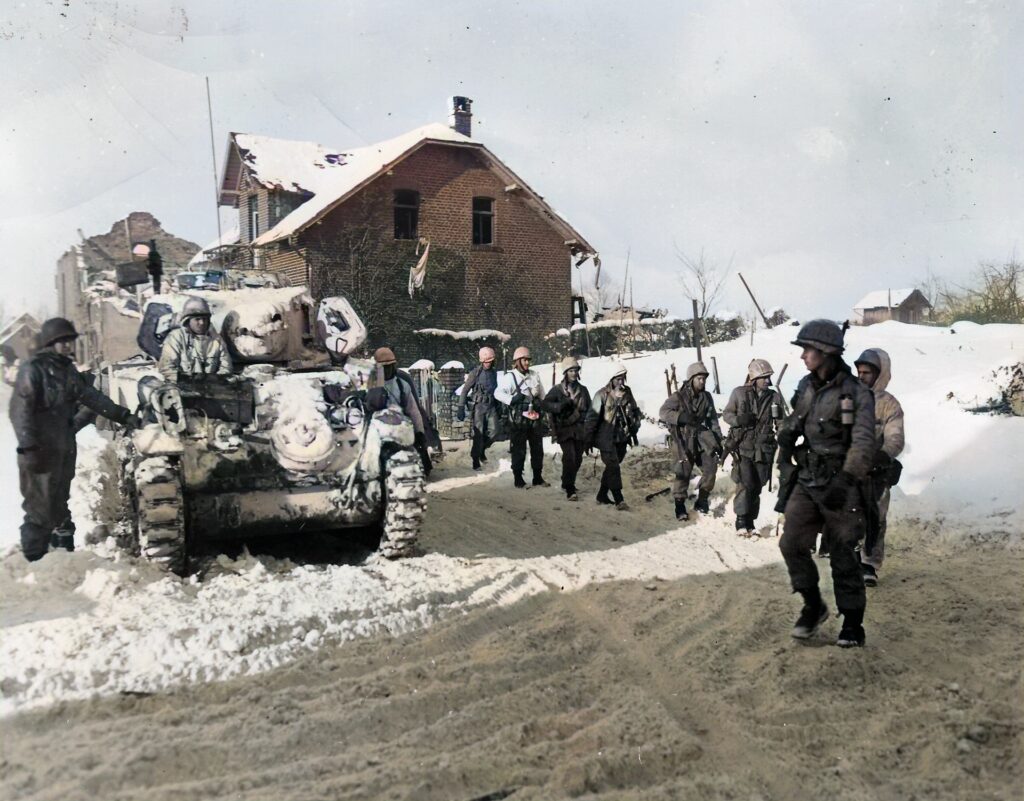
The veterans of the 106th Infantry Division formed strong bonds during and after the war. They created the 106th Infantry Division Association, which has held reunions, published histories, and ensured that the division’s experiences are remembered.
Monuments in St. Vith, Belgium, and across former battlefields bear witness to their stand. And in recent years, historians have revisited the division’s story, offering a more nuanced view of their actions, one that recognizes both the failures of command and the valor of individual soldiers.
Located in Manhay, Belgium, the Manhay History 44 Museum offers a rich and detailed portrayal of the Battle of the Bulge, with a special focus on the actions of the 106th Infantry Division. The museum features authentic artifacts, uniforms, and dioramas that immerse visitors in the brutal winter battles of December 1944. Through carefully curated exhibits, it highlights the experience of the Golden Lions in the Ardennes—especially their defensive stand, hardships, and the broader strategic impact of their actions. For anyone interested in the history of the 106th, this museum is an essential stop.
Conclusion
The story of the 106th Infantry Division is not just one of loss, it’s a story of bravery under fire, of young men thrown into hell and holding fast. Their fight at St. Vith helped stall the Nazi war machine. Their sacrifice echoes through the snowy forests of the Ardennes, a testament to duty, endurance, and the price of freedom.
The Manhay History 44 Museum
Located in Manhay, Belgium, the Manhay History 44 Museum offers a rich and detailed portrayal of the Battle of the Bulge, with a special focus on the actions of the 106th Infantry Division. The museum features authentic artifacts, uniforms, and dioramas that immerse visitors in the brutal winter battles of December 1944. Through carefully curated exhibits, it highlights the experience of the Golden Lions in the Ardennes—especially their defensive stand, hardships, and the broader strategic impact of their actions. For anyone interested in the history of the 106th, this museum is an essential stop.

